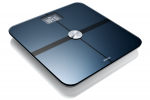If you are a long time reader of this blog, you know that it wasn’t always about ham radio. It’s really about whatever I happen to be thinking about and doing that I wish to share and talk about. Tonight’s topic was simply this: applesauce.
I was watching America’s Test Kitchen, where they were making homemade “shake n’ bake” style porkchops and applesauce. I didn’t really feel like having porkchops, but because I’ve been eating poorly lately (too many restaurants because of visiting son and his wife, and my own visits to my brother) I had a bit of a sweet tooth, and the idea of making some homemade applesauce sounded really good, and much better for me than the ice cream which I’ve been indulging far too often in lately.
If you buy applesauce in a can or jar, far too often it suffers from a number of problems. It can be made from apples which just aren’t very good. It’s often far too sweet, with lots of high fructose corn syrup. It can have preservatives or other additives. Often it includes overpowering spice elements like cinnamon. Yuck.
America’s Test Kitchen suggested a very simple recipe. Take 4 pounds of apples. Wash them, core them, and dice them into coarse chunks (skin on). Put them in a pot. Add 1/2 a cup of sugar, a pinch of salt, and a little water. Cook for around 15 minutes, until the apples are soft, and then put them through a food mill to remove the skins and even the texture.
They suggested a number of different apples that could be used. For my experiment, I used eight of the Pink Lady variety. They are related to the Golden Delicious, but have a nice rosy color to them that’s pretty. Eight of them was about 3.5 pounds uncored. I chopped them fairly coarsely, added a splash of water, a pinch of salt, and just a little sugar (no, didn’t measure, but probably less than 1/2 a cup, maybe just two table spoons). I set this covered on medium heat.
After a few minutes, you could smell a cider-like smell, and the apples began to boil and liberate a lot of water. I thought that maybe I had too much water, but after a few more minutes, the apples began to break down and lots of the liquid was reabsorbed. After about 15 or 20 minutes, the apples were soft and smelled delicious.
I don’t have a proper food mill, so I just took a potato masher and crushed ’em. Yep, skins still on, but as I mashed them, they lent their rosy color to the mash, and I actually liked the textural element. I added a very small amount of cinnamon, stirred it in, and then let it cool for a couple of minutes.
It was delicious. What’s really great is how the fresh complex flavor of the apples really come out. They are sweet, and tart, and clean tasting. Next time I make pork chops, I’ll have to make some of this applesauce. I think it would also be good with a scoop of good vanilla ice cream, or maybe with a cobbler like topping of oatmeal and brown sugar and maybe some cold cream.
We don’t appreciate these classic foods very often, at least in the way that they used to be made. Thanks to America’s Test Kitchen for motivating this delicious culinary experiment.


I recall burning three or four weeks of a sabbatical getting Saccade.com on the air with Wordpress. So much tweaking…